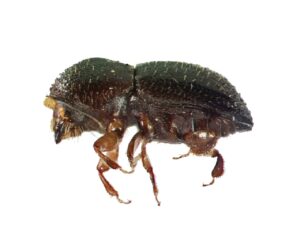[imagesource: Reuters / Fred Prouser]
The McDonald’s clown mascot is pretty creepy.
So none of us have likely been missing Ronald McDonald all that much since he’s all but disappeared from the scene over the past seven years.
Did you even notice that it has been that long since you last saw him? Probably not.
While his cardboard cut-outs have been “shoved into the stockroom next to the spuds” and his plastic bench statues collect pigeon poop, VICE has been pondering his rise and fall.
Let’s start at the beginning.
The real Ronald McDonald was born in 1934 as Willard Scott, who later became a radio personality and children’s entertainer.
At the peak of his career, Scott put on the iconic red wig and white gloves for the TV debut of “the Hamburger-Happy Clown”:
After Scott retired from the role in 1965, a number of other actors filled his yellow-laced boots, alternately apprehending the Hamburglar and visiting sick kids.
In the UK, Ronald never seemed quite as popular as in the US, but you could still buy an official Ronald McDonald wristwatch for £2,40 in 1986, and in 2003, he starred in a couple of comic books that came free with Happy Meals.
Scott as McDonald, everyone:

In recent years, Ronald has pretty much vanished, perhaps by way of the Hamburglar himself.
The official McDonald’s website has noted that Ronald no longer appears in McDonald’s UK advertising, although he still “travels up and down the country” to “make sure everyone is enjoying their meals” at the restaurants.
However, in a plot that is apparently “thicker than a vanilla milkshake making its way up a paper straw,” the mascot’s participation in community events and appearances in UK advertising stopped a whole two years before all the global creepy clown sighting that began in 2016.
The weird part is also that many of the people, organisations, and companies involved with McDonald’s are refusing to talk about what led to that decision being taken
That includes a media man who worked on McDonald’s UK advertising for three years, an LA-based former Ronald who wrote the official rulebook for playing the character, as well as the co-author of a 1972 rulebook named Ronald and How.

Guy Moore, who worked at an agency that orchestrated campaigns for McDonald’s, reveals what he thinks might have happened to give Ronald the boot:
2004 wasn’t a great year to start working with McDonald’s – that May, the documentary Super Size Me revealed that eating McDonald’s all day every day is bad for your health. (In hindsight, the fact this was a revelation is completely baffling.)
Moore says McDonald’s had “quite a serious issue” with “childhood obesity, lots of rumours regarding what goes into a burger” and he was tasked with reversing the fortunes of the company. “A simple brief… Oh, that little issue,” he jokes.
Ronald McDonald wasn’t the answer. “When Super Size Me and all of that kind of thing came out, the last thing we wanted to be sitting next to at the dinner table was a joker,” says Moore.
So they tried rebranding Ronald as more health-conscious and began gearing their advertising towards adults, not kids.
Ronald changed his outfit to be more modern, with a bowtie and a red blazer, and started tweeting.
Soon, the hashtag #NotLovinIt started trending in the US.
Ultimately, McDonald’s realised Ronald couldn’t be modernised, so they slowly but surely phased him out.
To add further fuel to the fire, the 21st-century obsession with whether or not McDonald’s fries were made from potatoes and chicken nuggets made from chicken breast came along:
It’s easy to see why the company didn’t want Ronald delivering the “our chicken is chicken” message, and thanks to the creepy clown craze, he hasn’t been seen on our screens since – though McDonald’s clearly aren’t opposed to general creepiness, if its current “Laughter” ad is anything to go by.
As Moore puts it, “everyone has their sell-by date” and not everyone likes clowns.
Not even some children.
[source:vice]





